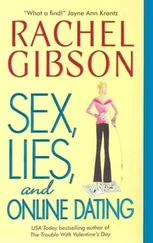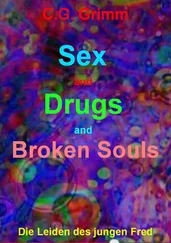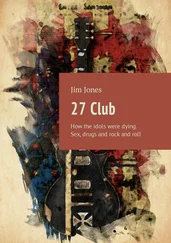The three questions I ask everybody I meet in order to decide if I can love them:
1. Let us assume you met a rudimentary magician. Let us assume he can do five simple tricks—he can pull a rabbit out of his hat, he can make a coin disappear, he can turn the ace of spades into the Joker card, and two others in a similar vein. These are his only tricks and he can’t learn any more; he can only do these five. HOWEVER, it turns out he’s doing these five tricks with real magic. It’s not an illusion; he can actually conjure the bunny out of the ether and he can move the coin through space. He’s legitimately magical, but extremely limited in scope and influence. Would this person be more impressive than Albert Einstein?
2. Let us assume that a fully grown, completely healthy Clydesdale horse has his hooves shackled to the ground while his head is held in place with thick rope. He is conscious and standing upright, but completely immobile. And let us assume that—for some reason—every political prisoner on earth (as cited by Amnesty International) will be released from captivity if you can kick this horse to death in less than twenty minutes. You are allowed to wear steel-toed boots. Would you attempt to do this?
3. Let us assume that there are two boxes on a table. In one box, there is a relatively normal turtle; in the other, Adolf Hitler’s skull. You have to select one of these items for your home. If you select the turtle, you can’t give it away and you have to keep it alive for two years; if either of these parameters are not met, you will be fined $999 by the state. If you select Hitler’s skull, you are required to display it in a semi-prominent location in your living room for the same amount of time, although you will be paid a stipend of $120 per month for doing so. Display of the skull must be apolitical. Which option do you select?
11 Being Zack Morris 1:27
Sometimes I’m a bad guy, but I still do good things. Ironically, those good things are often a direct extension of my badness. And this makes me even worse, because it means my sinister nature is making people unknowingly smile.
Here’s one example: I was once dating a girl in a major American city, and I was also kind of pursuing another girl in another major American city. I had just received one of those nifty “CD burners” for my computer, so I started making compilation albums for friends and particularly for lady friends. Like most uncreative intellectual men, almost all of my previous relationships had been based on my ability to make incredibly moving mix cassettes; though I cannot prove it, I would estimate that magnetic audiotape directly influenced 66 percent of my career sexual encounters. However, the explosion of CD burning technology has forced people like me to create CDs instead of cassettes, which is somewhat disheartening. The great thing about mix tapes was that you could anticipate the listener would have to listen to the entire thing at least once (and you could guarantee this by not giving them a track listing). Sequencing was very important. The strategy was to place specific “message” songs in-between semimeaningless “rocking” songs; this would transfix, compliment, and confuse the listener, which was always sort of the goal. However, once people starting making their own CDs, the mix tape suddenly seemed cheap and archaic. I had no choice but to start making CDs, even though they’re not as effective: People tend to be more impressed by the packaging of the jewel case than the songs themselves, and they end up experiencing the music no differently than if they had thoughtlessly purchased the disc at Best Buy (i.e., they skip from track to track without really studying the larger concept behind the artistic whole).
ANYWAY, I was making a mix disc for one of these women (I will never admit which), and it was my intention to find eighteen songs that reflected key elements of our relationship, which I thought I did. But as I looked at the track selection, it suddenly dawned on me that these songs were just as applicable to my other relationship. My feelings for “Woman A” were completely different than my feelings for “Woman B,” but the musical messages would make emotional sense to both, despite the fact that these two women were wildly dissimilar. So I ended up making two copies of this album and sending one to each woman, using all the same songs and identical cover art (computers make this entirely too easy). I expressed identical romantic overtures to two different people with one singular movement. And they both received their discs on the same day, and they both loved them. [48] 1. Until now, I suppose.
Part of me will always know this was a diabolical thing to do. However, I’m mostly struck by the fact that all my deepest, most sincere feelings are so totally stereotypical that they pretty much apply to every girl I find even vaguely attractive. My feelings toward every woman I’ve ever loved can be completely explained by Paul McCartney’s “Maybe I’m Amazed,” Rod Stewart’s “You’re in My Heart,” and either Matthew Sweet’s “Girlfriend” or Liz Phair’s “Divorce Song” (depending on how long we’ve known each other). My feelings about politics and literature and mathematics and the rest of life’s minutiae can only be described through a labyrinthine of six-sided questions, but everything that actually matters can be explained by Lindsey fucking Buckingham and Stevie fucking Nicks in four fucking minutes. Important things are inevitably cliché, but nobody wants to admit that. And that’s why nobody is deconstructing Saved by the Bell .
Saved by the Bell is like this little generational secret that’s hyperfamiliar to people born between 1970 and 1977, yet generally unremarkable to anyone born after (and completely alien to all those born before). It was an NBC sitcom that ran for four years (1989 to 1993) after an initial thirteen-episode season on the Disney Channel (where it was originally titled Good Morning, Miss Bliss ). The show spawned two spin-offs— Saved by the Bell: The College Years and Saved by the Bell: The New Class —and also included a six-episode summer run (usually referred to as the “Malibu Sands” miniseason) and two made-for-TV movies (one set in Hawaii, the other in Las Vegas).
It was a program about high school kids.
I realize that is not much expository information. Typically, one tries to explain TV shows in terms of “context”—if someone asked me to describe The X-Files, for example, I would seem like a moron if I said, “It was a program about two people who mostly looked for aliens.” That would never qualify as a significant description. I would have to write about how the supernatural religiosity of The X-Files personified a philosophical extension of its audience, and how the characters represented two distinct perspectives on modern reality, and how the sexual chemistry between Mulder and Scully was electrified by their lack of physical intimacy. All this abstract deconstruction is necessary, and it’s necessary because The X-Files was artful. However, I have never watched even one episode of The X-Files, because I’m not interested. I’m not interested in trying to understand culture by understanding that particular show, and that’s part of the social contract with appreciating anything artful. You can’t place something into its aforementioned “context” unless you know where (and how) to culturally file it, and I honestly don’t care where The X-Files belongs in the American zeitgeist. Dozens of smart people told me how great this show was, and I’m sure they were right. But I’m satisfied with assuming that program was about two people who mostly looked for aliens, so—as a consequence—the show meant nothing to me. I “don’t get it.”
Читать дальше












